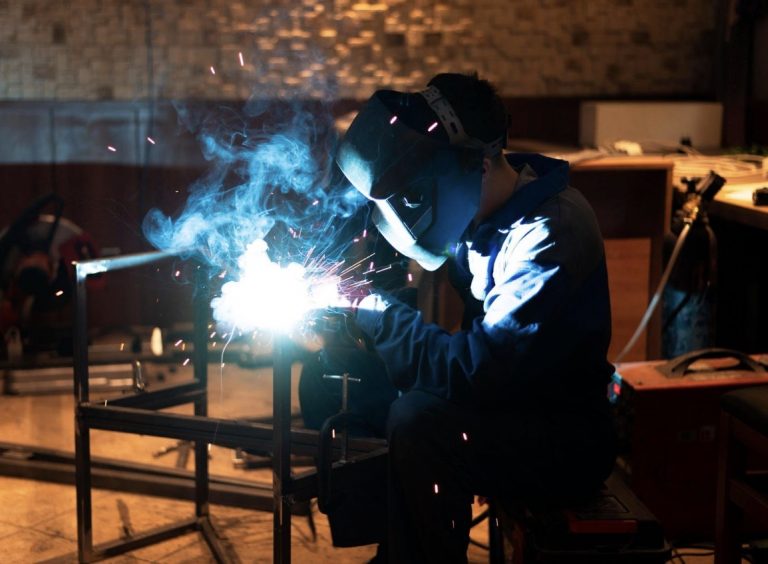The right storage of welding tools is paramount for the safety and longevity of your equipment. The wrong way of keeping welding tools may pose serious accidents or damage. This article provides detailed instructions for safely storing welding tools in your garage, which includes everything from preparing the storage area to maintaining your equipment.
Preparing the Storage Area
Determining the most favorable place for keeping welding equipment is the first step to guaranteeing their safety and prolonged longevity. Ideally, the storage area should be located away from the high-traffic zones to reduce the chance of accidental bumps or collisions. This could mean designating a corner of your garage or setting up a separate storage room or shed for your welding equipment.
Your storage area must be adequately ventilated so that there is no buildup of fumes or gases. Proper ventilation can be done by installing exhaust fans. Make sure there is enough air flowing through windows or vents. Provide a dry and cool environment that can help you avoid rust or other forms of corrosion that could damage your welding tools in the long run. Use a dehumidifier or climate control system if needed.
The proper garage organization is the key to having your welding tools readily available and in ace condition. A dedicated shelving unit, preferably made of sturdy, non-inflammable materials like metal or treated wood, is a top-notch way to keep your instruments neatly organized. Think about using pegboards, tool chests with marked compartments, or a custom welding cart with drawers for smaller items such as welding tips, nozzles, and consumables.
You can label and categorize your weld tools by type or function, which will make the storage process even more streamlined. It will be quite easy to find specific items around the garage area when you need them. For instance, you can set up separate sections or shelves for welding machines, rods and wires, personal protective equipment (PPE), and other accessories.
Storing Welding Equipment
The welding machine itself should be kept in a dry, cool place, preferably elevated off the ground to avoid moisture damage. If it is possible, install a separate workbench or a platform for your welding machine so that it is level and stable. Cables and leads need to be coiled and stored in a way that prevents kinks or bends. As this may cause premature wear or breakage. Use cable organizers or hooks to keep them always untangled.
If you use gas cylinders for welding, it’s extremely important to store them correctly. Always maintain the upright position of the gas cylinders and use chains or straps to secure them against falling or rolling. You must keep those cylinders away from heat sources, electrical equipment, and flammable materials, as well as the areas with high foot traffic or potential for impact.
Welding rods and wires must be placed in moisture-proof containers to prevent rusting and contamination. Plastic or metal containers with desiccant packs are the best option for this purpose. Accurate labeling and organization of these consumables can also help you use the right materials for your projects, which will reduce waste and potential safety hazards.
Personal Protective Equipment (PPE) is integral to any welding setup, and it’s necessary to store it properly in order to preserve its effectiveness. Welding helmets and masks should be stored in a cool, dry, and dark place that is far from direct sunlight or heating areas that may degrade the lens or other components. Think about investing in a helmet bag or case for extra safety.
Gloves, jackets, and aprons should be kept clean and dry and stored in a way that prevents creasing or folding which can weaken the materials over time. Hanging them on racks or using specialized PPE storage cabinets may help keep their shape and lengthen their lifespan.
Maintenance and Inspection
Frequent cleaning and inspection of your welding equipment is substantial to ensure their good performance. Set a timetable for examining your instruments and search for indications of wear, damage, or corrosion. Be careful about the places that are prone to wear, for example, cable insulation, electrode holders, and ground clamps.
Regular cleaning and lubricating of the moving parts by following the manufacturer’s recommendations can prevent seizing and early failure. Keep your welding area clean and free of debris, which not only can damage your tools but also can create fire hazards.
If any components are found to be worn or damaged, replace them immediately to avoid further issues. The use of damaged or weakened equipment may result in accidents definitely want to avoid.
Get rid of obsolete or unusable items. Follow your local regulations for the safe disposal of hazardous materials. A lot of welding consumables and components contain chemicals or metals that require special handling and waste disposal methods.
Establishing an inventory and a log of your welding tools will help you keep the tools in their best condition. You can get a spreadsheet or a dedicated notebook that will save you time and effort in the long run by allowing you to plan ahead for replacements or repairs.
Conclusion
The adoption of the guidelines given in the guide above is the key to successful welding tool storage. By selecting the right location, organizing your tools, storing them properly, and regularly performing inspections, you can reduce the likelihood of accidents, increase the life of your welding items, and get a more effective welding experience.


0 Comments